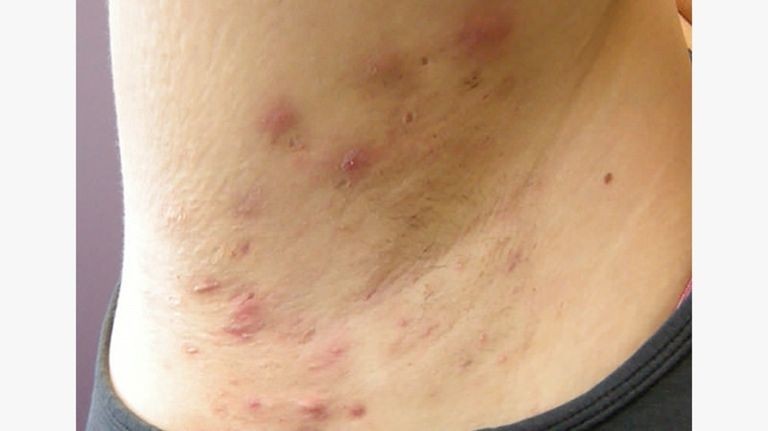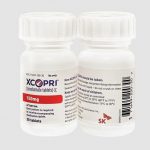
Contents
Why Does Hidradenitis Suppurativa Smell?
Hidradenitis suppurativa (HS) smells when cysts/boils break open and ooze pus. The smell is from the cyst contents, which consist of bacteria and broken down cells from human tissue.
Anaerobic bacteria, which thrive in low oxygen conditions in wounds, often infect HS cysts. The bacteria degrade attacking white cells and other tissue cells. The degraded cells release compounds with a distinctive, unpleasant odor.
What is hidradenitis suppurativa?
Hidradenitis suppurativa is an inflammatory skin disease that causes lumps under the skin around hair follicles or in areas where skin rubs against skin. These lumps can become infected and form painful abscesses that rupture, leak pus, and scar the skin.
Hidradenitis primarily occurs in the armpits, groin, and pubic areas where apocrine glands (scent glands) are abundant, but they can also occur around the nipples, inner thighs, or anal area.
Hidradenitis typically starts with one painful bump resembling a pimple. As the disease progresses, more cysts form, join together, and either recur or appear in other body areas. Sinus tracts, abnormal tissue tunnels, can also form under the skin, connecting the abscesses.
Hidradenitis suppurativa is classified into three stages known as Hurley stages, based on the severity:
- Hurley stage I: Isolated abscess formation
- Hurley stage II: Lesions, recurrent abscesses with sinus tracts and scarring
- Hurley stage III: Interconnected sinus tracts and abscesses covering an entire area
What are the symptoms?
Hidradenitis symptoms include itching, pain, redness, tenderness, swelling, blackheads, and pus leakage with a strong odor.
Persistent breakouts can lead to thick scar tissue formation, bacterial skin infections, social isolation, depression, and rarely, squamous cell carcinoma.
What is the cause?
Hidradenitis begins with excessive growth of keratinocytes, cells in the skin. Keratin overgrowth clogs hair follicles and apocrine gland ducts, trapping sweat within follicles. Abnormal functioning of apocrine glands may contribute to clogging.
The trapped sweat builds up, leading to inflammation and tenderness. The lump becomes a painful boil until it bursts. If the boil gets infected, it becomes an abscess filled with pus that emits an unpleasant odor when it drains.
The cause of keratin overgrowth and follicle clogging is unclear, but it is not due to poor hygiene or contagion. HS is associated with age, gender, genetics, hormones, immune disorders, obesity, and smoking.
What triggers HS?
HS flares can be triggered by excessive sweating, hormonal changes during the menstrual cycle, stress, shaving the affected area, and use of deodorants.
What is the best treatment?
There is no known cure for HS, but early treatment can manage symptoms and prevent flare-ups. Treatment is individualized and varies depending on the severity. Warm compresses can alleviate pain in mild cases. Medications include anti-inflammatory drugs, antibiotics, corticosteroids, retinoids, hormone therapy, and immunosuppressants. Surgery options include incision and drainage, laser surgery, deroofing, tissue removal and grafting, and carbon dioxide laser therapy.
How can HS be prevented?
Healthy lifestyle choices can reduce HS flares. Tips for prevention and control include identifying and avoiding triggers, maintaining a nutritious diet and healthy weight, not smoking, keeping the skin cool, using gentle soaps and avoiding irritating skin products, wearing comfortable clothes, and practicing stress management techniques.


